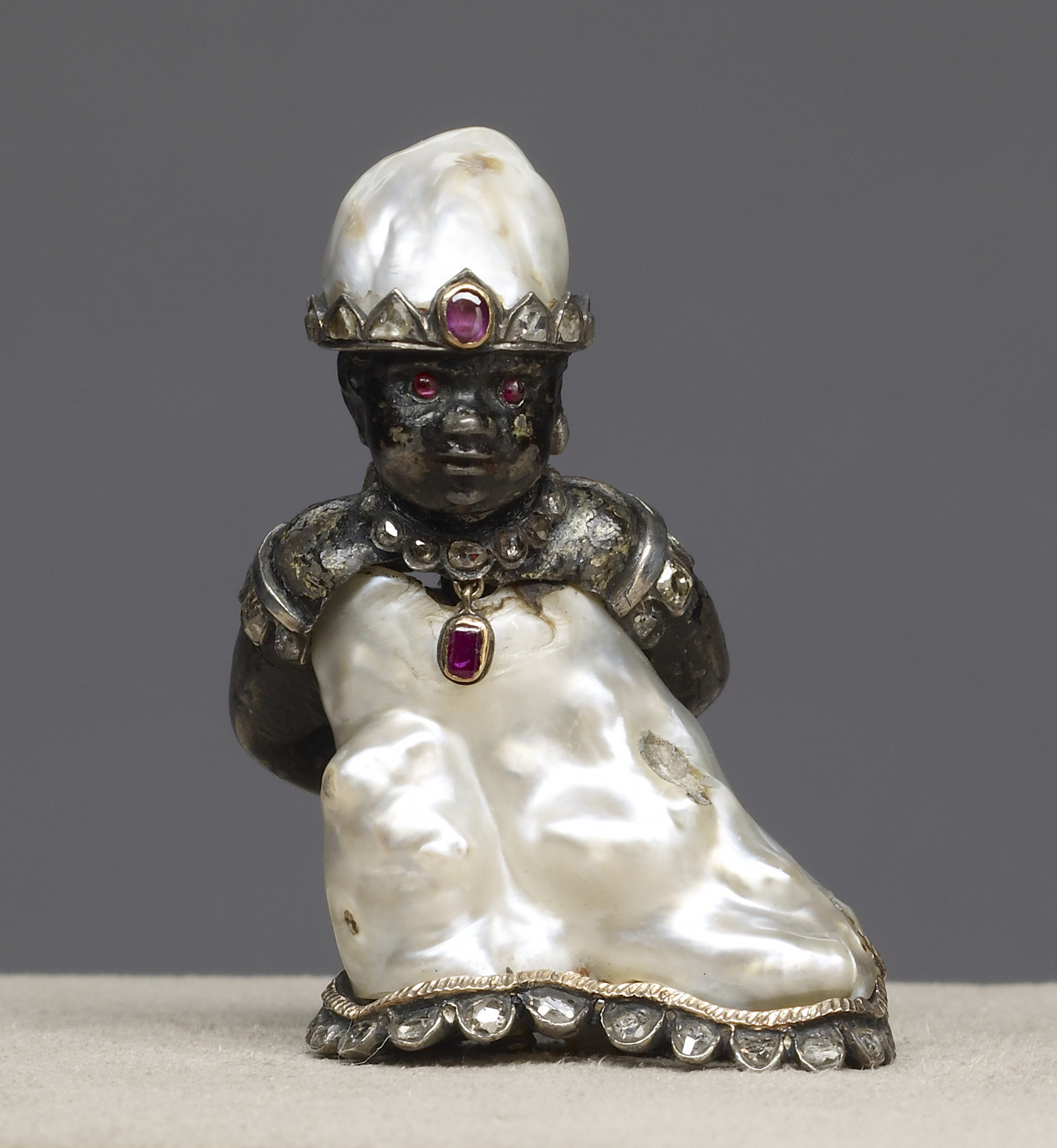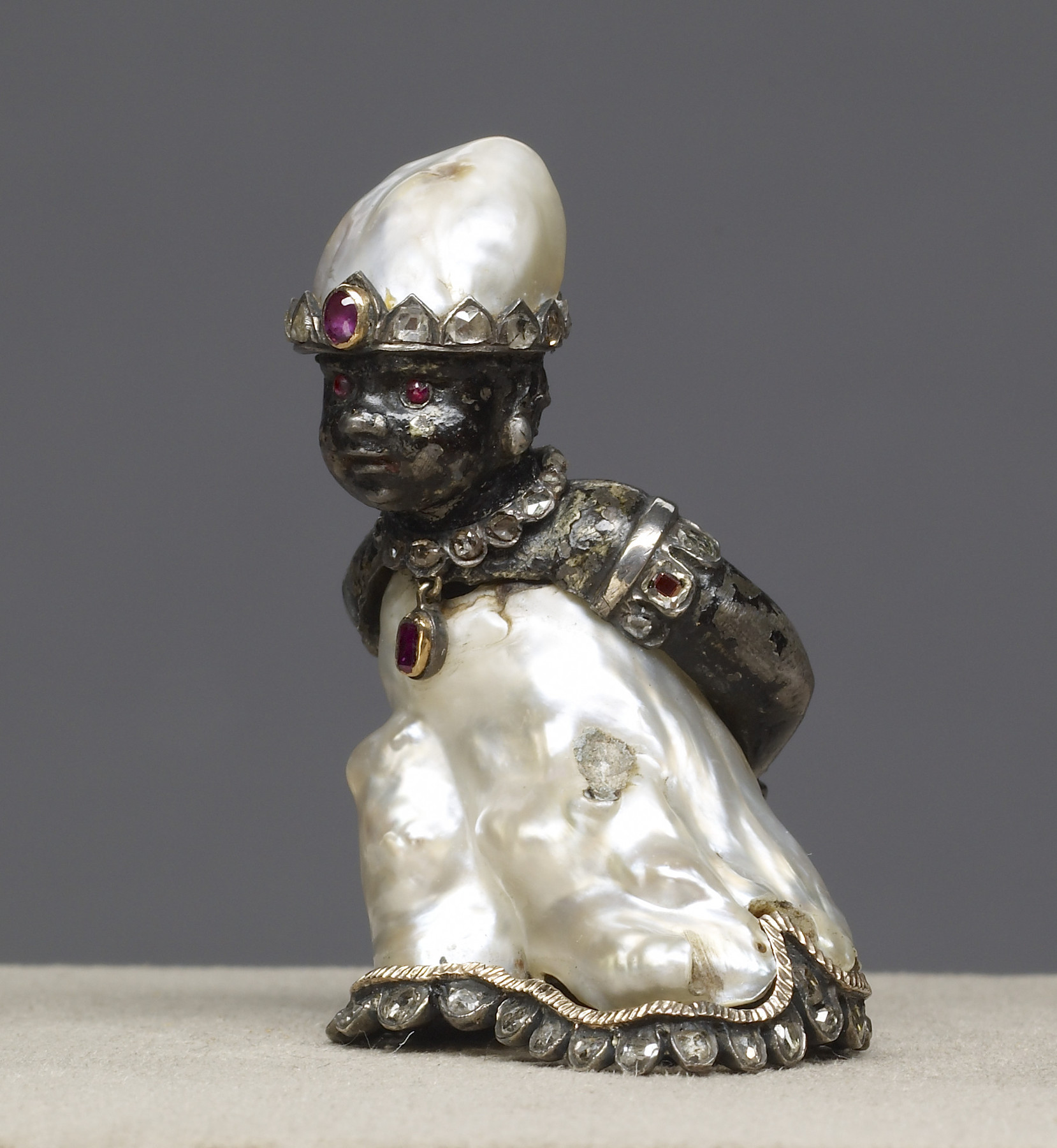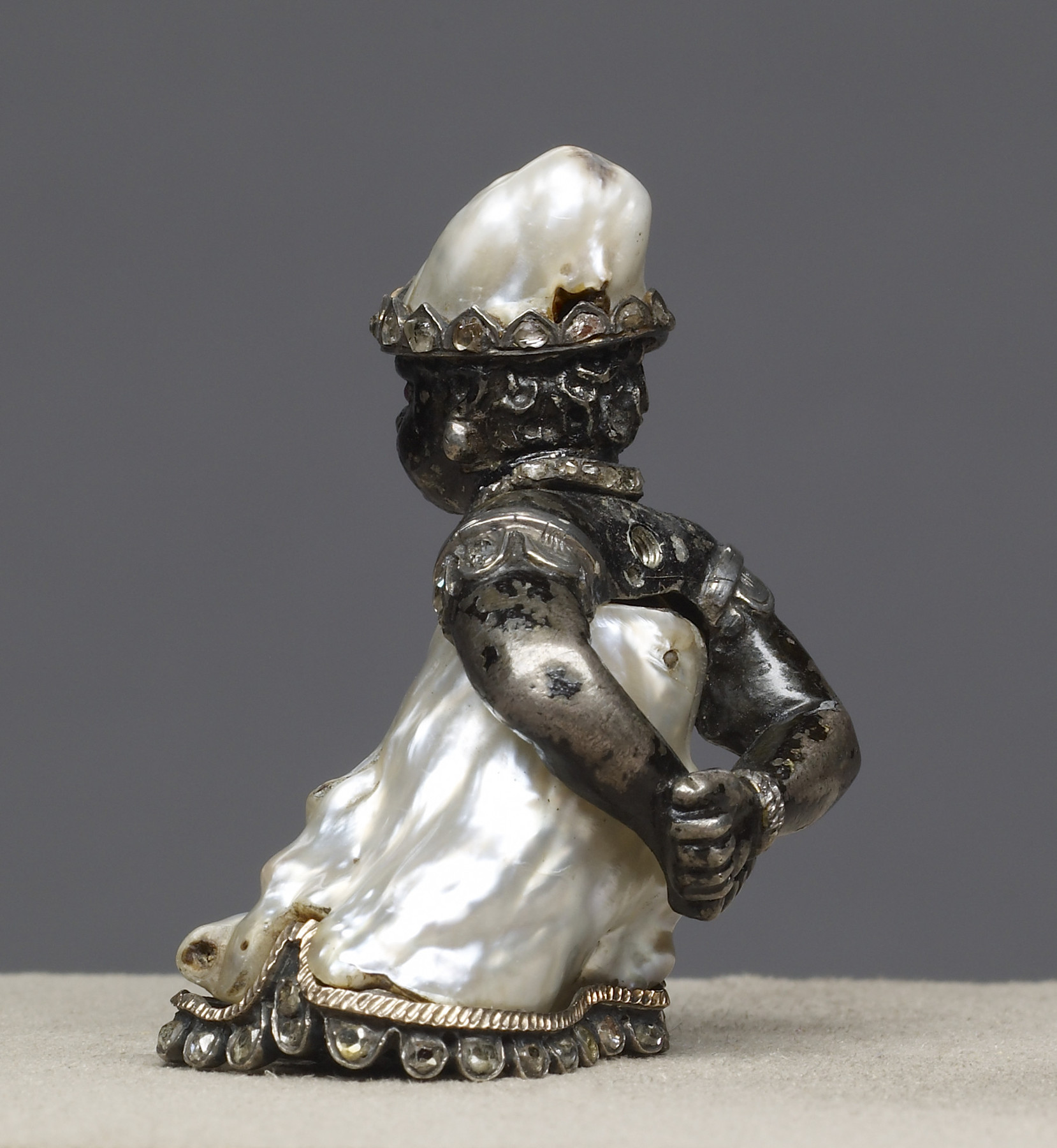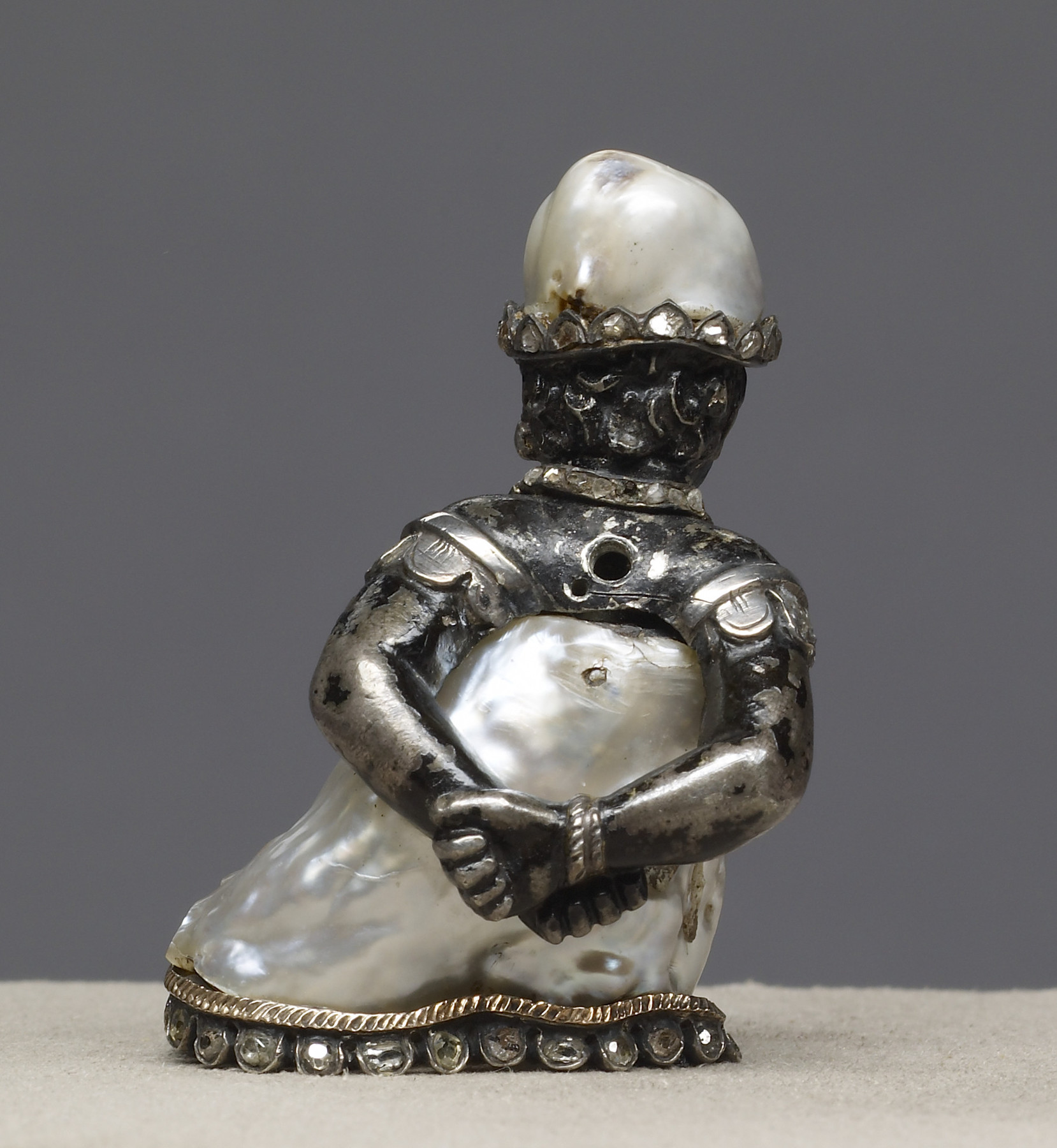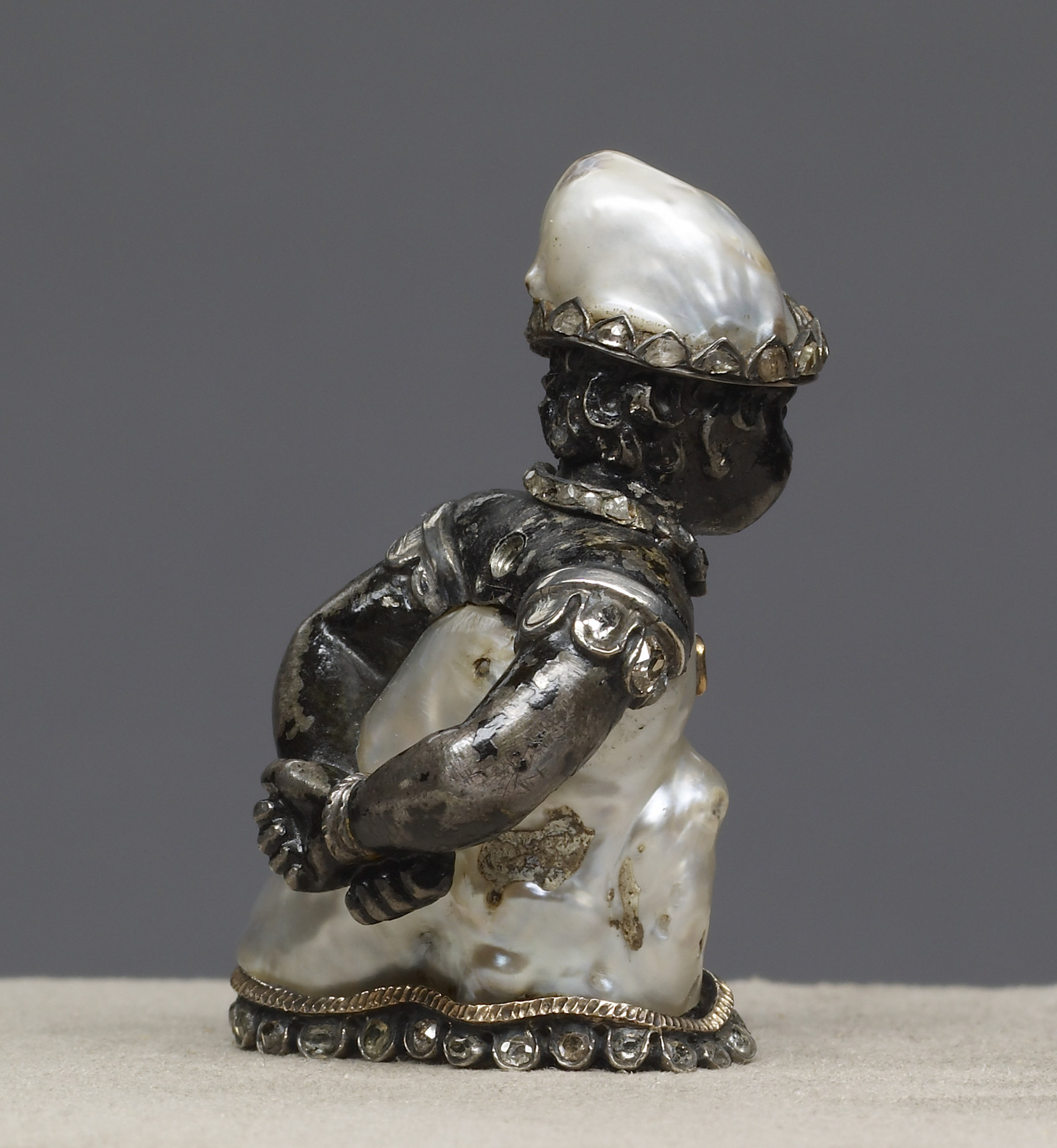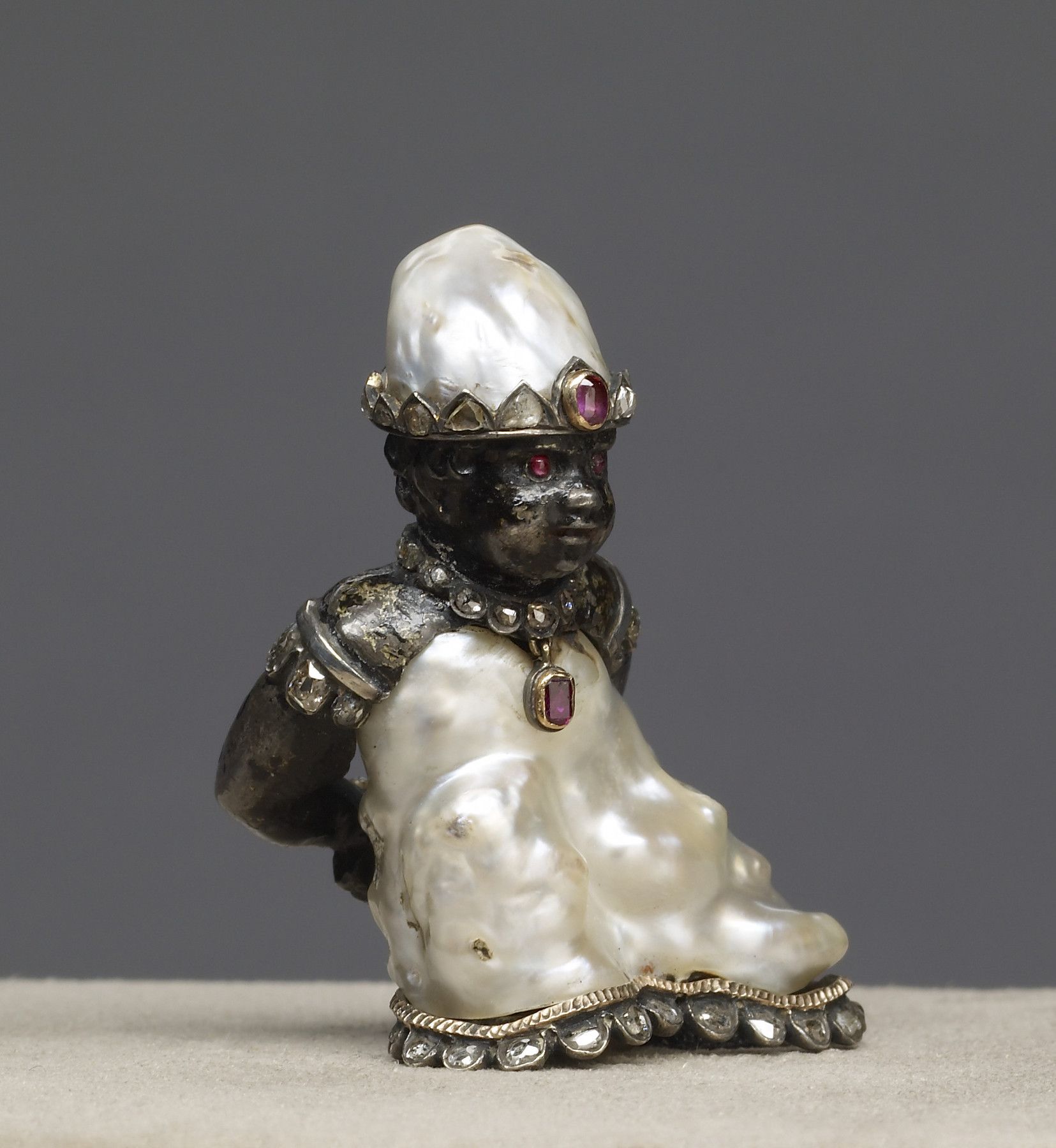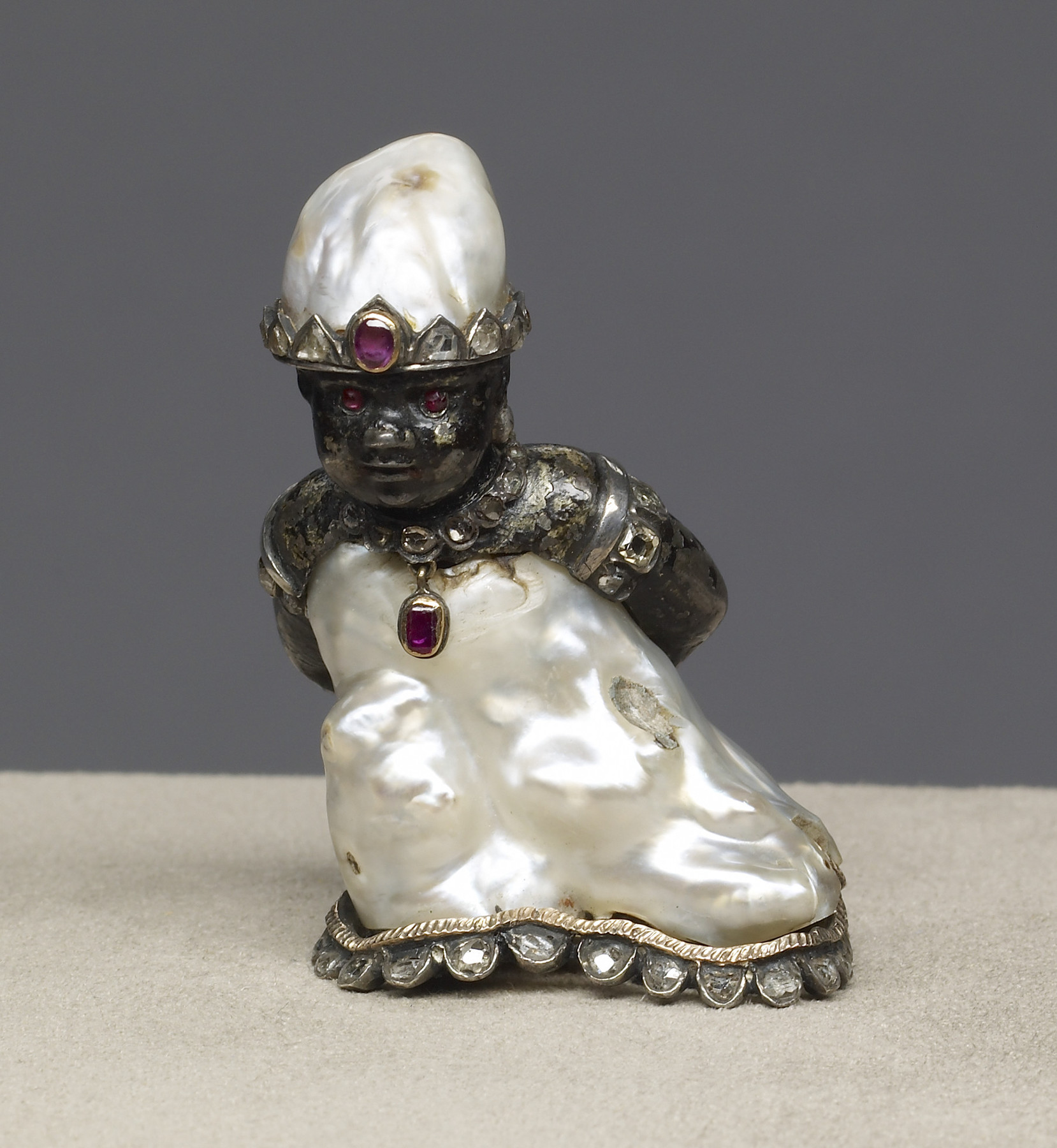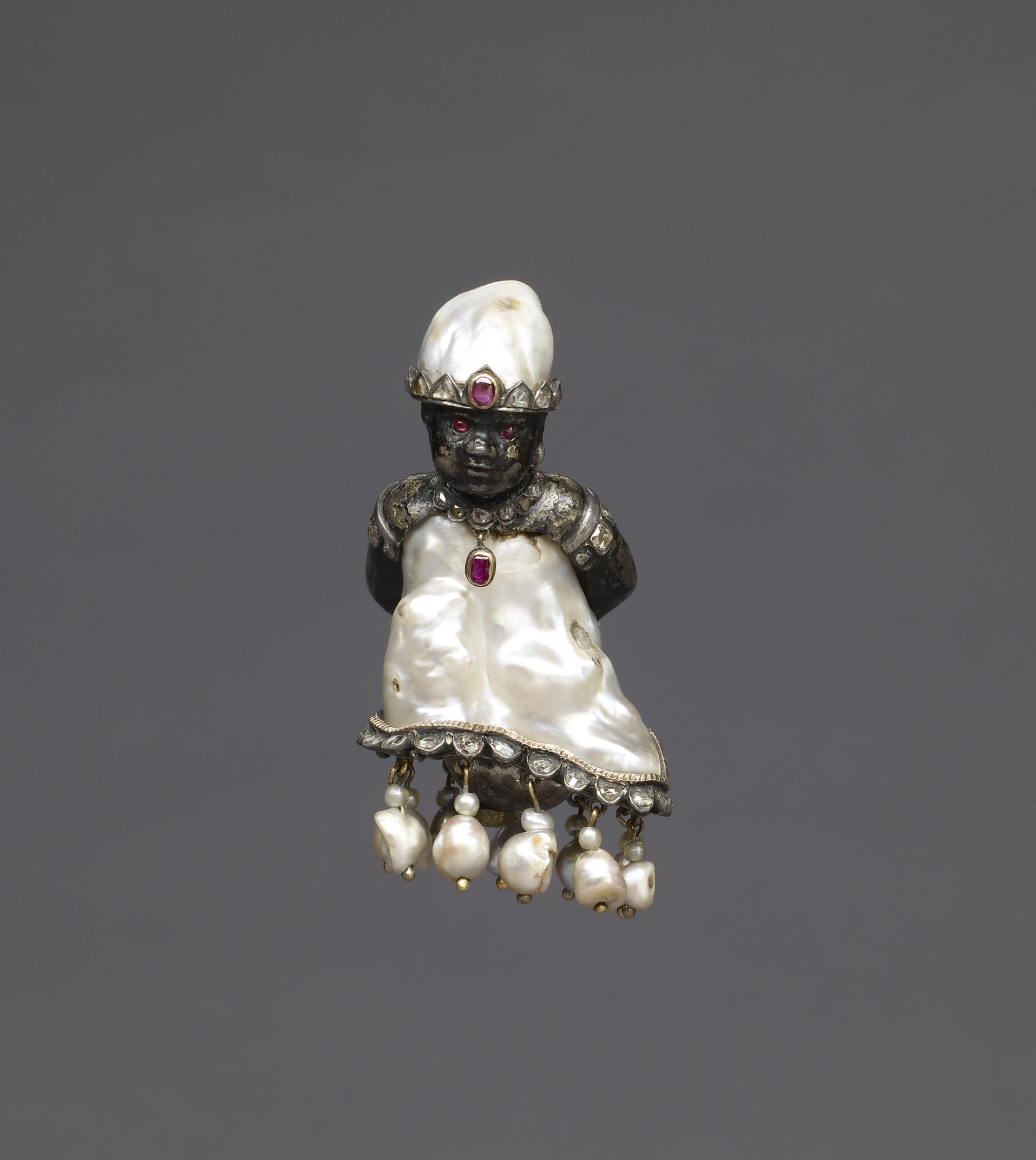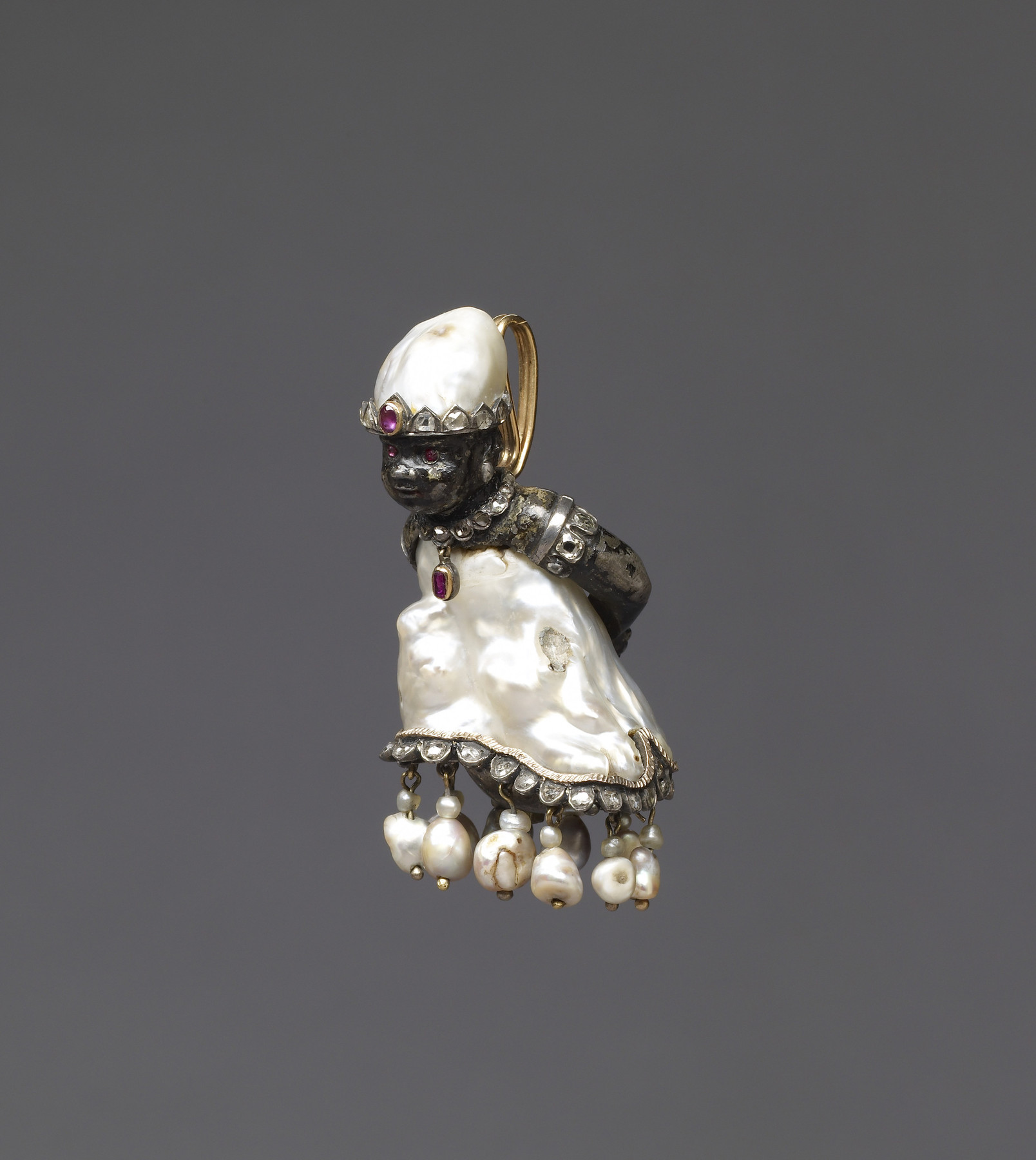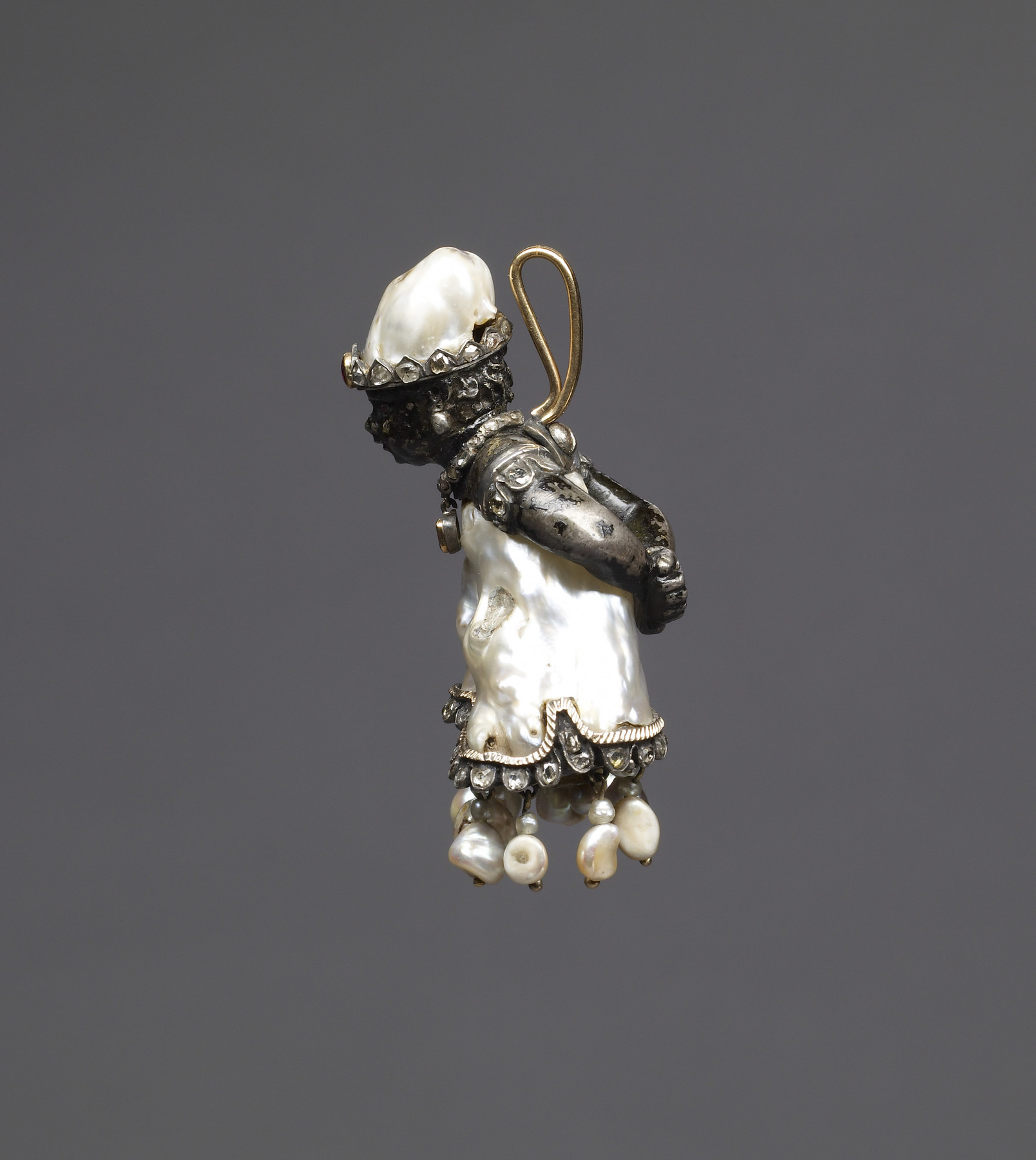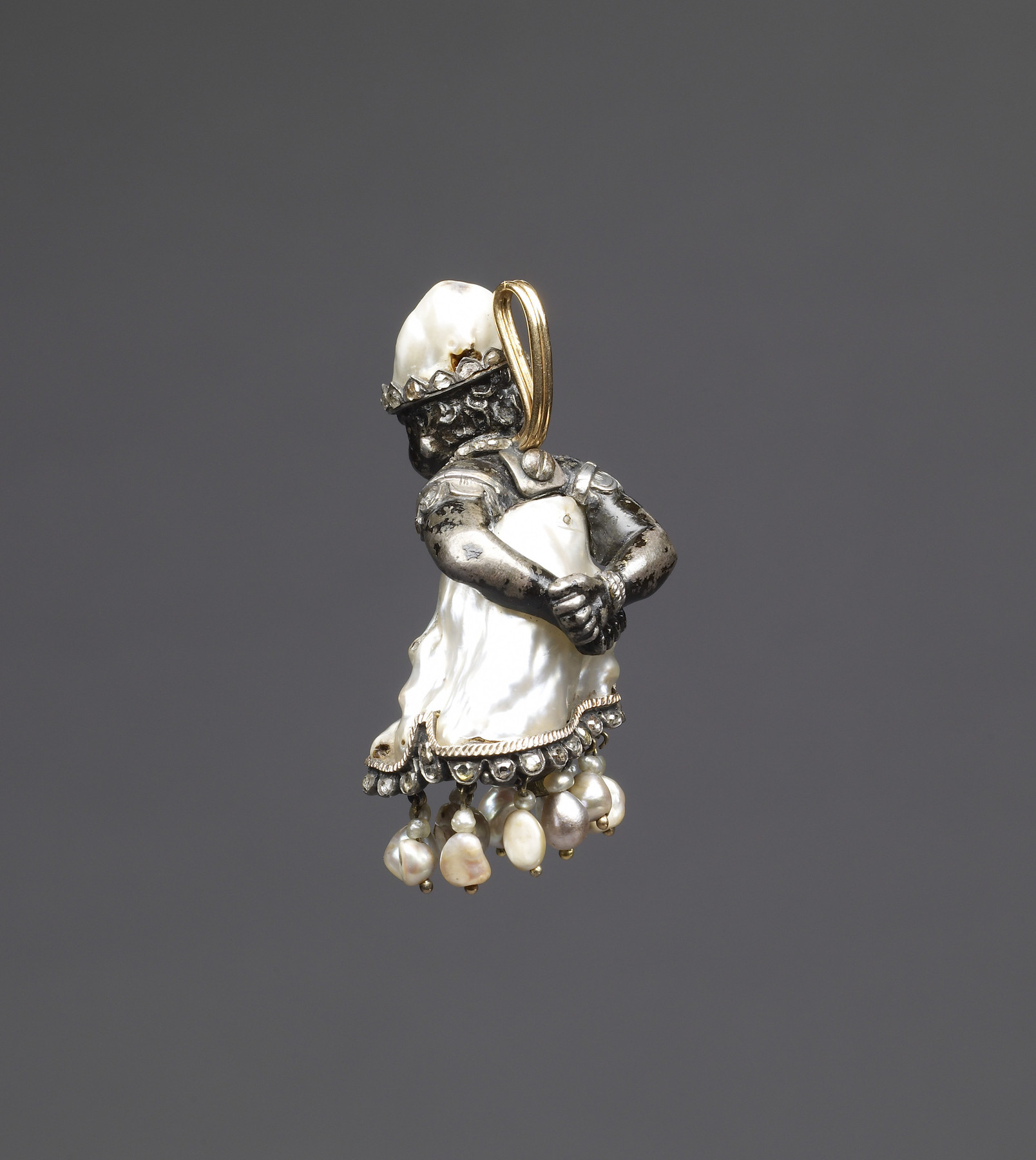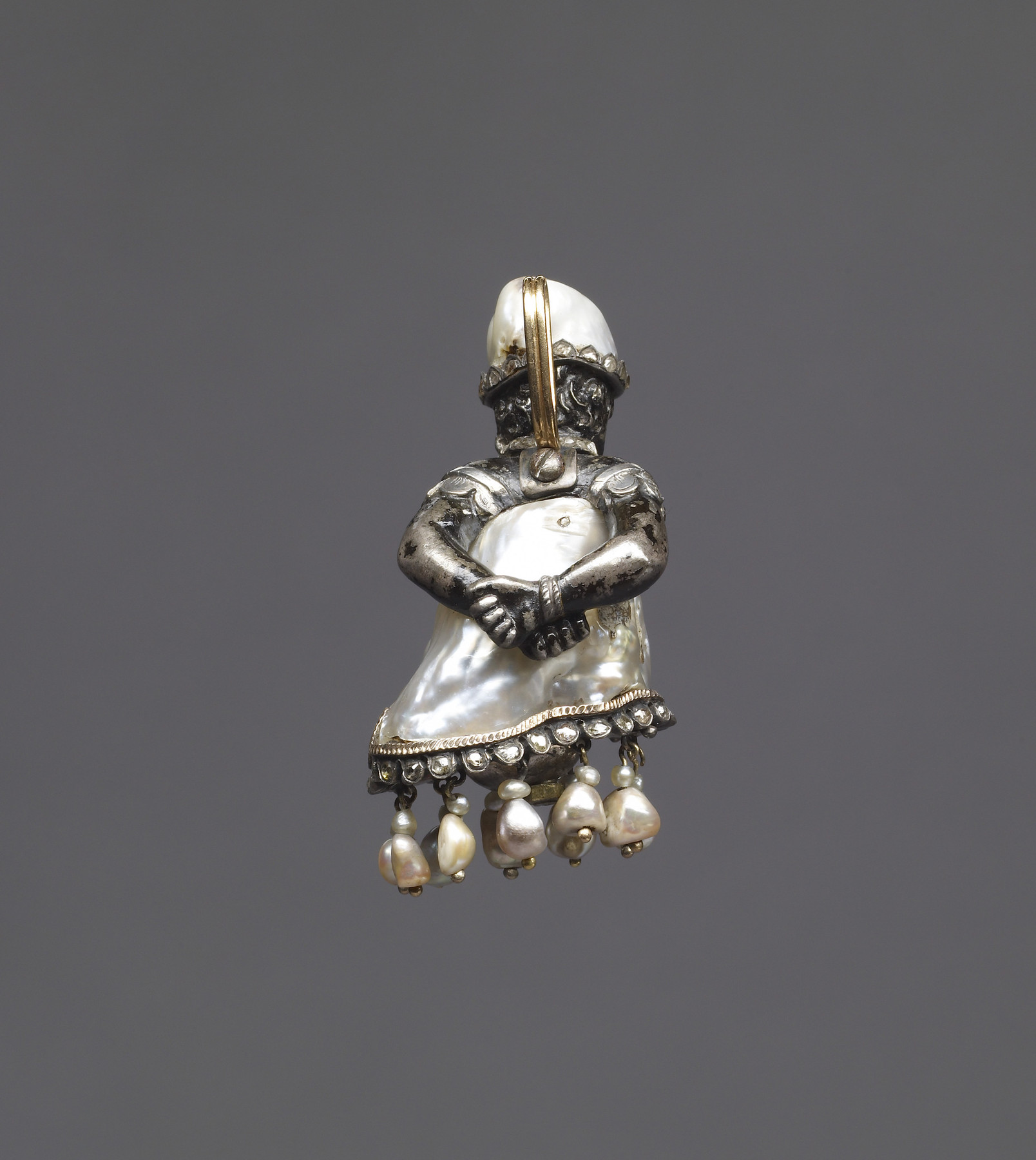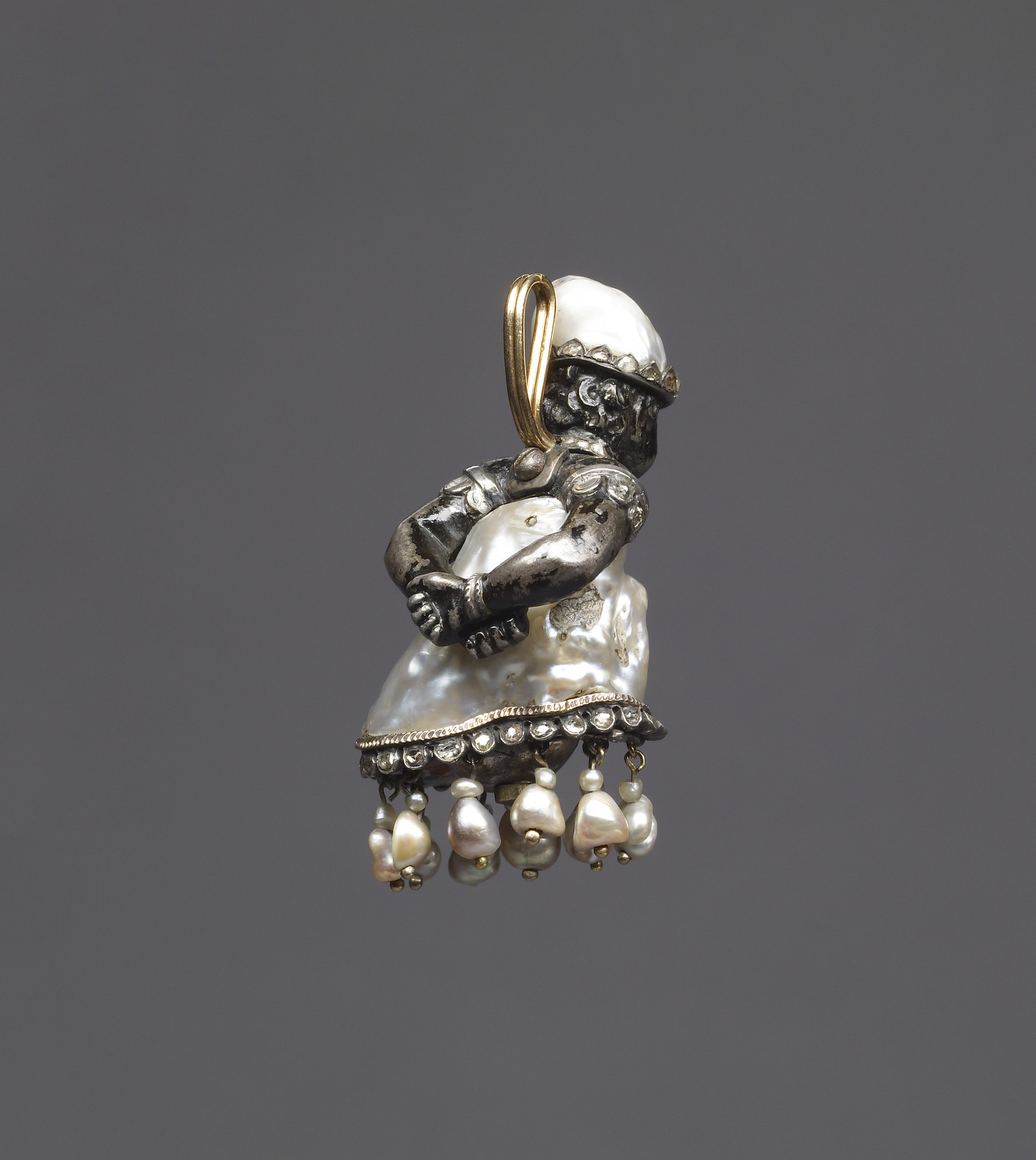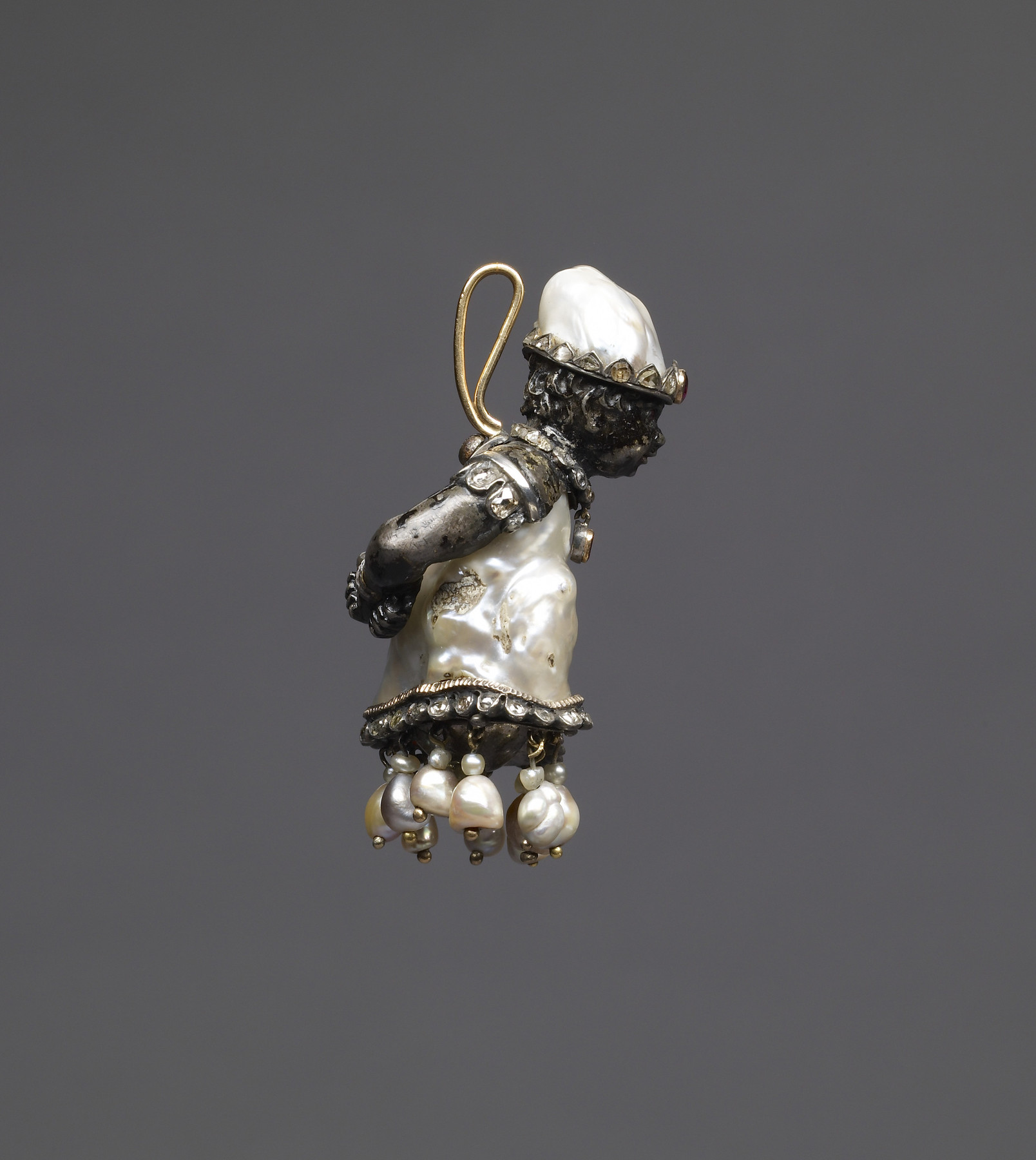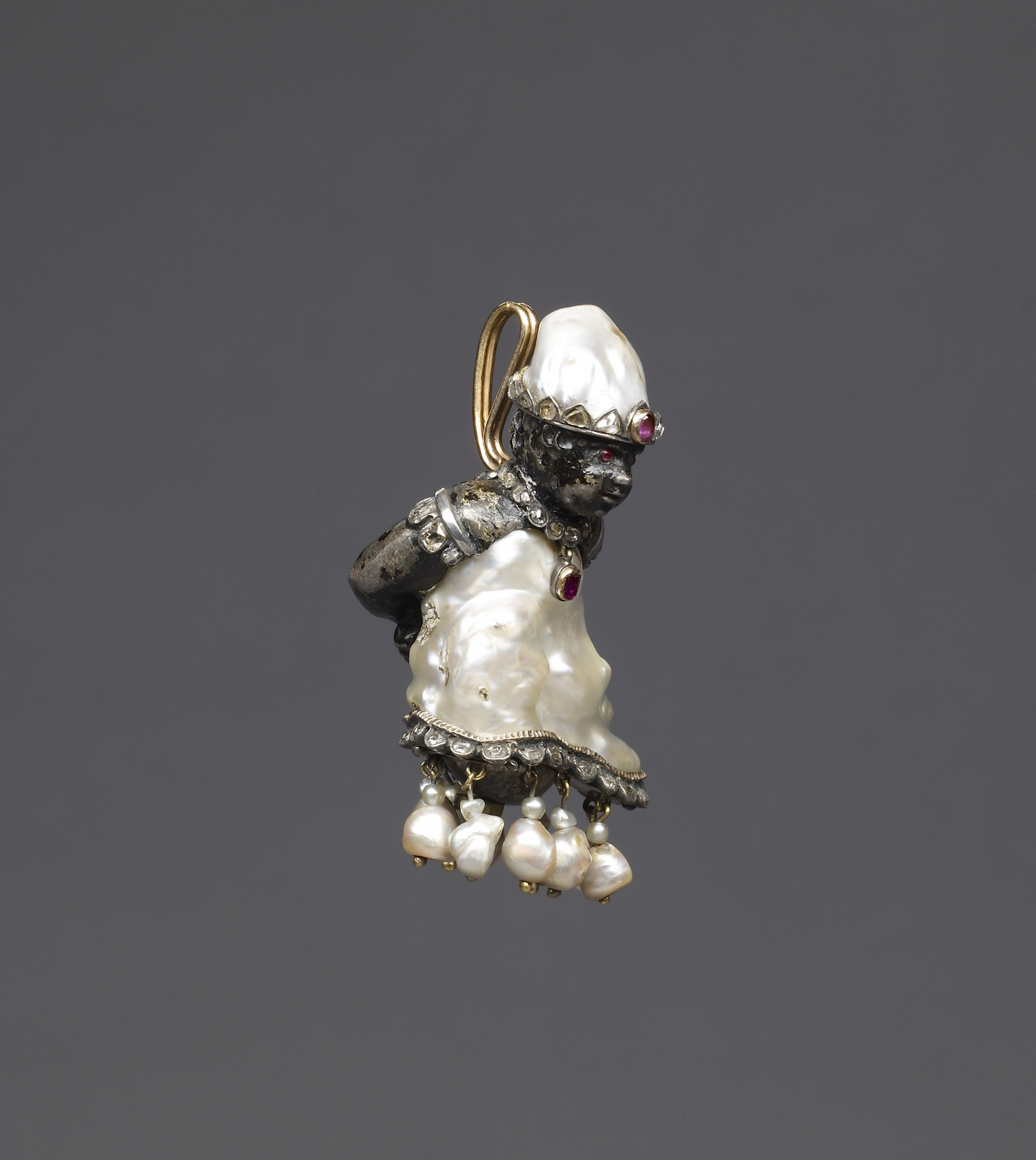"Pearl Figure" of a Black African Captive
Pearl figures (Perfiguren in German) were figures about 2 to 4 inches high that were crafted primarily from silver, enamel, diamonds, and one or more “baroque” pearls, a term taken from the Portuguese for irregularly shaped pearls in which the layering of nacre that takes place inside the oyster shell has gone awry into a lumpy blob. In the 1600s all kinds of extra-ordinary forms of nature were newly appreciated. One consequence was that the use of such pearls became a specialty of German silversmiths around 1690-1730 who served regional courts (where collections of unusual specimens of nature were common), as that of the Elector August the Strong in Dresden.
Given the flamboyant irregularity of baroque pearls, favored categories of subjects involved people that courtiers could safely/politically find amusing such as exotic foreigners and their animals or the German working classes, beggars or the disabled. “Class” was everything.
Nevertheless, this is an odd piece. The intention appears to be for the pearls to suggest the white robe and peaked hood of a North African man, but he is Black, his hands are tied behind him and the positioning of the pearl makes it look as if he is on his knees and attempting to rise. For viewers today, it is extremely challenging to understand how this could be viewed as amusing. There is also the issue that to viewers today the shape of the pearl may suggest a strapless dress, thus a woman, but the hood contradicts that detail, probably the result of accommodating the shape of the pearl. The closest example is a bust-length Black man (Dresden, Green Vaults collection, inv. VI 171, before 1705) for which the misshapen bust is one baroque pearl and peaked hat is another, while the arms are not distinguished. One’s first reaction today is that the Walters figure is enslaved. However there appears to be no tradition within the German courtly arts of reveling in enslaved figures in manacles. On the other hand, rulers did sometimes still adopt the Roman custom of depicting defeated adversaries in chains, but this cannot be the case here.
There are many black servants in the imagery of Augustus’s court, but they are depicted as exotic décor, working away in good humor. Is it telling that this piece is not found today in a public collection that was the successor to a princely collection? Did the maker do an excellent job of assigning human bodily movement to the shape of the pearl but get the scope of what was humorous seriously wrong? At present, this cannot be answered easily. More generally, research is needed, especially in the archives of former German courts that might indicate who is salaried and who is not. Historically in Europe, courts were potentially good places for initially enslaved Black African males to rise but the evidence remains anecdotal, limited to indivudual cases.
This figure was meant to rest on a flat mount. The loop for suspension and fringe of seed pearls were added at some later point.
Provenance
Provenance (from the French provenir, 'to come from/forth') is the chronology of the ownership, custody, or location of a historical object. Learn more about provenance at the Walters.
Henry Walters, Baltimore [date and mode of acquisition unknown]; Walters Art Museum, 1931, by bequest.
Exhibitions
| 2014 | The Janet & Walter Sondheim Artscape Prize 2014 Finalists. The Walters Art Museum, Baltimore. |
| 1984-1987 | Objects of Adornment: Five Thousand Years of Jewelry from the Walters Art Gallery, Baltimore. Cooper-Hewitt National Design Museum, New York; Chrysler Museum of Art, Norfolk; Carnegie Museum of Art, Pittsburgh; San Antonio Museum of Art, San Antonio; Philbrook Museum of Art, Tulsa; Honolulu Academy of Arts, Honolulu; New Orleans Museum of Art, New Orleans; Milwaukee Art Museum, Milwaukee; Minneapolis Institute of Art, Minneapolis; Toledo Museum of Art, Toledo; The John and Mable Ringling Museum of Art, Sarasota. |
| 1987 | Jewelry from the Walters Art Gallery and the Zucker Family Collection. The Walters Art Gallery, Baltimore. |
| 1979-1980 | Jewelry - Ancient to Modern. The Walters Art Gallery, Baltimore. |
| 1971-1972 | World of Wonder. The Walters Art Gallery, Baltimore. |
Conservation
| Date | Description | Narrative |
|---|---|---|
| 5/24/1984 | Examination | examined for technical analysis |
| 5/9/1991 | Examination | examined for condition |
Geographies
Germany, Dresden (Place of Origin)
Measurements
H: 2 3/16 in. (5.6 cm)
Credit Line
Acquired by Henry Walters
Location in Museum
Not on view
Accession Number
In libraries, galleries, museums, and archives, an accession number is a unique identifier assigned to each object in the collection.
In libraries, galleries, museums, and archives, an accession number is a unique identifier assigned to each object in the collection.
57.887

